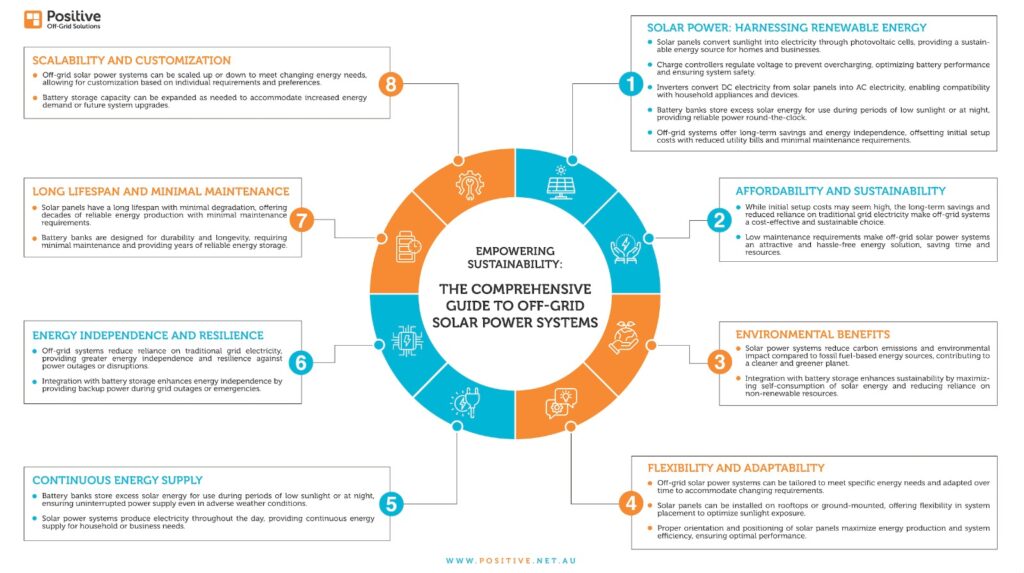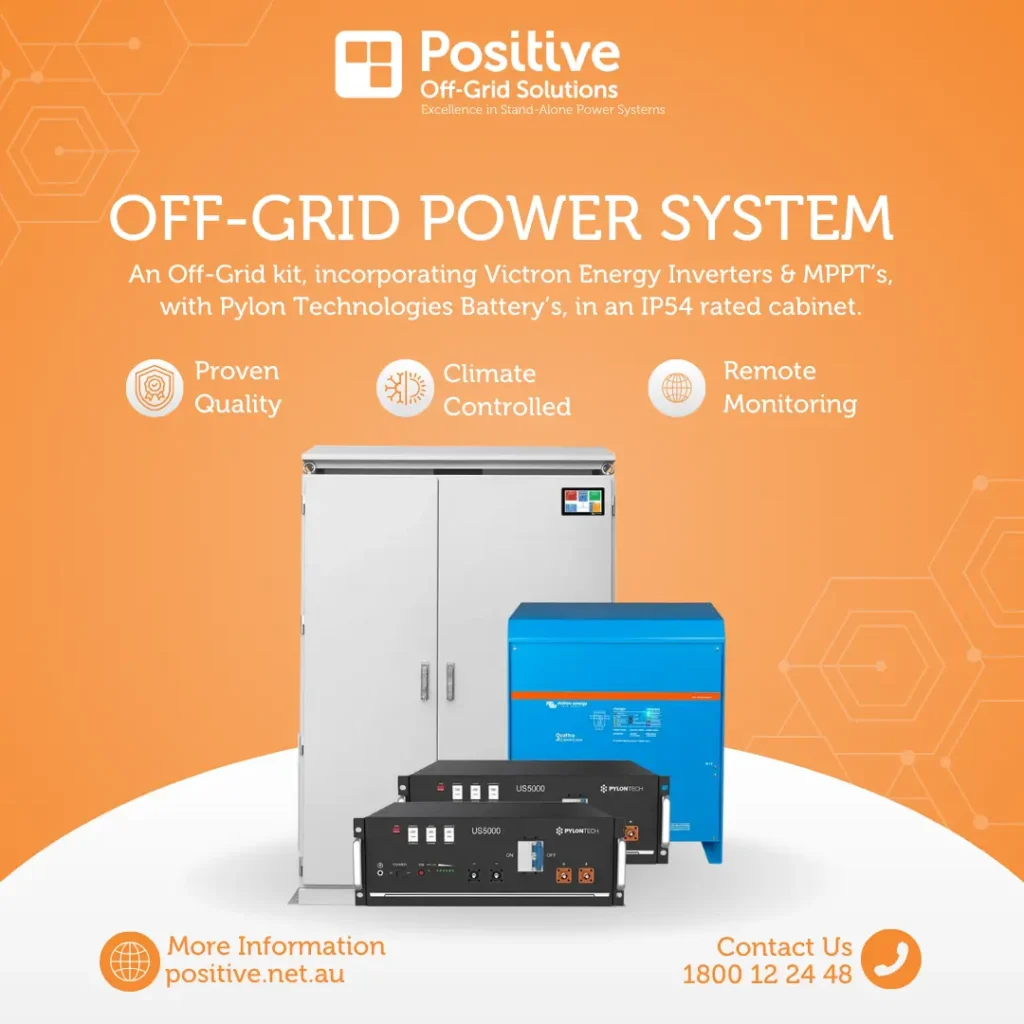
Chapter 1: Understanding Off-Grid Power Systems
Off-grid power systems, also known as standalone power systems, offer a sustainable and self-reliant approach to meeting energy needs. Unlike traditional grid-tied systems, off-grid setups operate independently of the main electrical grid, relying on renewable energy sources such as solar, wind, or hydro power. This chapter provides an in-depth understanding of off-grid power systems, exploring their functionality, benefits, and applications.
Off-grid power systems function by harnessing renewable energy sources to generate electricity. Solar panels, often mounted on rooftops or ground-mounted arrays, capture sunlight and convert it into electrical energy through photovoltaic cells. The generated electricity is then stored in battery banks for later use or converted into usable AC power through inverters. Charge controllers regulate the voltage and current flowing between the solar panels and batteries, optimizing energy production and ensuring battery longevity.
Benefits of Off-Grid Power Systems
The primary benefit of off-grid power systems is energy independence. By generating their own electricity, individuals and businesses can break free from reliance on centralized utility grids, reducing their exposure to power outages, price fluctuations, and energy insecurity. Off-grid systems also offer environmental benefits, as they produce clean, renewable energy without emitting harmful pollutants or greenhouse gases.
Off-grid power systems are well-suited for a variety of applications, including remote cabins, rural homesteads, eco-friendly homes, and off-grid businesses. They provide a reliable source of electricity in areas where grid connection is impractical or prohibitively expensive, empowering individuals and communities to live sustainably and self-sufficiently.
In summary, off-grid power systems offer a decentralized and sustainable approach to meeting energy needs, providing energy independence, environmental benefits, and resilience against power outages. As renewable energy technologies continue to advance, off-grid systems are becoming increasingly accessible and affordable, offering a promising path towards a greener and more sustainable future.
Get in touch to receive a quote today!





